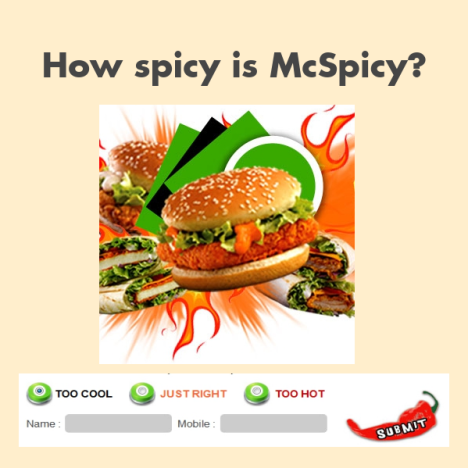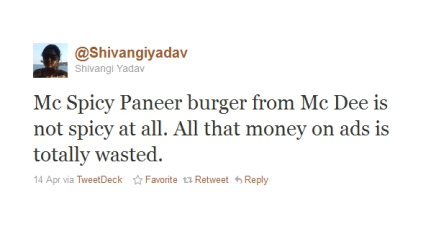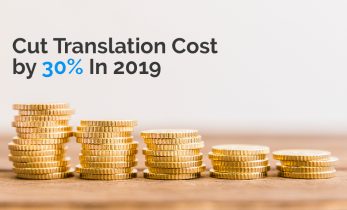Greater than 5 minutes, my friend!
Why “fast food” localization will never work
In ‘n’ out translations? The way the overwhelming majority (99.999…%) of businesses deal with their translations is: drop in the files, pick them up translated a couple of days later. Move on.
I call this “fast food” localization.
What’s for dinner?
At a fast food place in the USA, you can drive in, place your order at the microphone, pick it up at the window a couple of meters later, pay and drive out. Dinner: checked. Saving: checked. Though I wouldn’t be so sure about the later…
If you want something a bit more fancy (and healthy) than you go to a restaurant. You sit down, order, get a nice service and a warm and tasty plate of food.
But sometimes, there’s that special occasion that calls for a special dinner. And this is where you have to put in a bit more work to find a special restaurant, read the menu, online reviews, reserve a good table, put on something nice… you know, the whole package.
And it’s all worth it, right? Because you wanted a special dinner for a special occasion.
If you read some of my other blog articles, you’ve noticed that there’s something about me, food and localization. Because choosing a localization service, is like choosing a restaurant: you get what you paid for.
Sometimes, if you need to localize a special campaign or a special product, it might be worth investing time and effort in a creating a well-thought localization strategy and choosing a good localization service.
No disconnect between the product and the message
At the end of March 2011, McDonald’s India launched McSpicy Paneer, a premium vegetarian burger.
The creation of this burger took 2 years, so it is no wonder that McDonald’s invested in a large marketing campaign to promote its new premium vegetarian line, including large billboards and an awesome TV commercial.

The main focus of this campaign was the spiciness factor of the McSpicy Paneer. Do you see the chillies in the image?
The commercial is even more suggestive: it starts with the question “How spicy is McSpicy” and it continues with fast scenes of people at home in bed, in an elevator, on rolling stairs, in the office, at a music studio, in the park eating the really spicy burger.
It’s an iconic commercial! The day the McSpicy Paneer was launched, people stormed McDonald’s.
But then, something strange happened: customers started to complain online that the paneer burger was not spicy.
“Spicy or not – is there a disconnect in McDonald’s latest McSpicy promise?” is a 2011 article from a disappointed customer that still appears on the first page of a Google search of the term “McSpicy Paneer” 7 years later!
So what happened there?
The author of the article summarizes it brilliantly:
“…there is a serious disconnect between the core message and the product!”
The message at the center of the McSpicy Paneer campaign was: “SPICY”. But the burger was not spicy by Indian standards. This is what another customer commented online:
 I actually ate a McSpicy Paneer in Mumbai in 2014 and I can confirm that it’s not one bit spicy.
I actually ate a McSpicy Paneer in Mumbai in 2014 and I can confirm that it’s not one bit spicy.
So how can you avoid having such a disconnect between the message and product? It’s all about your localization strategy.
The healthy localization strategy for your business
The McDonald’s product was localized correctly: 7 years later it still sells very well even outside of India. But the launch marketing campaign was not localized correctly.
Why?
The message was a promise for burning hot spicy food that the product couldn’t deliver.
Localization is all about the message. And this is what you need to have in mind when choosing your localization strategy.
You can use one of 3 localization techniques, depending on your message.
Translation
If the message is informative use translation.
“McDonald’s launched a vegetarian premium line.”
There’s not much to consider when transmitting this information to an international audience.
Transcreation
If the message is appellative use transcreation.
“Freshly baked bread and the tender and soft crispy coated paneer.”
Very often, the translation comes back as:
“Freshly baked bread and the tender and soft crispy coated paneer (homemade fried Indian cottage cheese).”
How is this message appellative for an international audience? What would a person who is not familiar with Indian cuisine think? Crispy cheese? Doesn’t cheese like melt when you fry it? It sounds strange, alienating.
Let’s analyze for a moment the esthetic value of the source text.
It starts with “freshly baked bread” which is not very common in Indian cuisine. The bread is the exotic part of the burger.
Then, it continues with “tender and soft crispy coated panner”. Paneer is a staple food in the Indian cuisine. And if you ever eat it, you know that it is fried and it doesn’t melt. It has the consistency of a firm yet tender slice of tofu, only much tastier.
The familiarity of the traditional crispy paneer loved by every single Indian combined with the smell and taste of the exotic freshly backed bread creates a certain image, a certain feeling, and a certain esthetic information for an Indian audience.
How can you take this blueprint and repackage the message for a new audience in a new country without losing this esthetic information?
Maybe you can concentrate on the traditional Indian touch, if your target audience is familiar with Indian cuisine, maybe you can concentrate on the feeling of discovery if your audience is not familiar with Indian cuisine.
It’s important to dare to seemingly distance yourself from the source text. In reality, you will never be more intimate with a source text, as when you transcreate it.
Copywriting
Finally, if the message doesn’t suite the target audience, you need to write a new message: this would be copywriting.
“How spicy is McSpicy?”
This line won’t work for the Indian market because the McSpicy Paneer burger is not spicy by Indian standards. The main message of the campaign for India cannot be “We launched a very spicy paneer burger”.
Localization is all about the message. But here comes the twist: it is the audience, and not the marketing or localization specialist, who decides what the message should be.
Conclusion
McDonald’s is actually amazing at localizing their products and advertising campaigns. But the above example shows that even the best can sometimes miss important “details” in their localization efforts.
After spending 2 years perfecting the recipe for the McSpicy Paneer and a considerable amount of money for their advertising efforts, the message fell flat. That’s because the product could not deliver on the promise of the marketing campaign.
The message falls flat if the product cannot deliver on the promise of the marketing campaign.
Partnering up with a good localization specialist might have saved McDonald’s some money and a lot of face.
It is the same with any marketing localization efforts: dropping the files to an agency and passing by some days later to pick them up won’t guarantee good quality translations. The reason is that it takes more than a source text to get a good translation.
It takes more than a source text to get a good translation.
Just as you would take your time to organize a dinner at a good restaurant, take the time to look for a good localization partner and to share your vision with them. You could use a localization management tool such as a localization kit to systematically document the relevant information about your product, service and campaign, and send it to your translator together with your localization request.
Whatever you do, don’t forget that taking a shortcut will come in short when it’s time to launch.
How about you, do you have a localization strategy for your business or do you need one? Share your experience in the comments section below.
And stayed tuned for the next article in this series where I’ll write about why your audience is crucial when choosing your message.





That’s a wonderful and very useful article!
Thank you Zoya for reading and leaving a note! 🙂
Thank you for the great article, Claudia! I liked the “Fast food vs fancy restaurant” comparison. Never thought of translation from that angle.